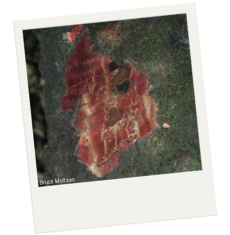
Other names: Sudden oak death, ramorum leaf blight – foliar/twig disease, ramorum dieback, phytophthora canker disease, Phytophthora ramorum
Plants susceptible: Oaks, rhododendrons, horse chestnut, laurel. For full list see: Host plant list
Where did it come from?
Sudden oak was first detected in San Francisco in the mid-90s. It can be spread through infected plants and soil in the nursery industry as well as through contaminated water.
Why is it invasive?
It causes bark cankers, leaf spots, twig dieback, and can lead to death in infected trees. The loss of hardwood forests disrupts native ecosystems and increases risk of forest fires. The loss of tree stock can cause economic loss in the nursery and landscaping industry
How do you prevent its spread?
♦ Timely diagnosis of disease
♦ Disposal of contaminated material
♦ Quarantine for infested counties
Resources:
♦ Special alert: Sudden oak death
Seen it? Report it! Through the app, online, by email, or by phone (1-866-663-9684).
Image credit: Bruce Moltzan, USDA Forest Service, Bugwood.org